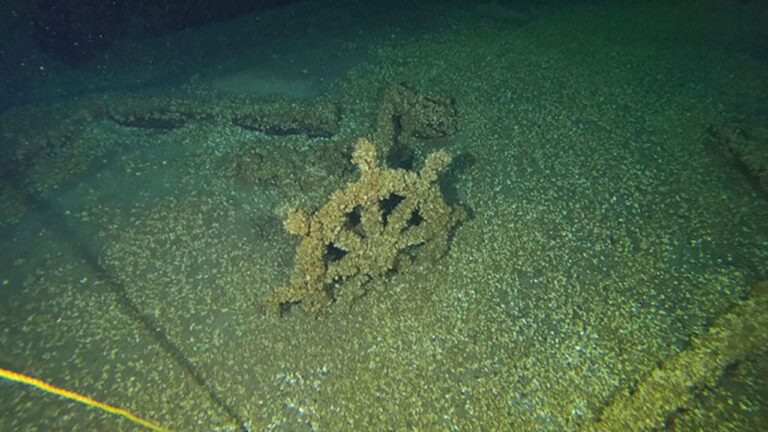Intact 1881 Shipwreck Found in Lake Michigan: Remarkable Preservation
Shipwreck enthusiasts have uncovered a captivating discovery beneath the waters of Lake Michigan – the well-preserved remains of a schooner that sank in 1881. This remarkable find includes the ship’s intact deck-house, crew’s belongings, anchors, and deck gear, all resting miles away from Wisconsin’s coastline.
In July, Wisconsin maritime historians Brendon Baillod and Robert Jaeck revealed their extraordinary find: the 156-year-old schooner named Trinidad. Using side-scan sonar technology and drawing from historical accounts of survivors, they located the ship at a depth of approximately 270 feet off Algoma.
A recent news release on Thursday highlighted the significance of this discovery. The Trinidad stands out as one of the best-preserved shipwrecks in Wisconsin waters, showcasing its astonishing state of preservation even after more than a century.
The Trinidad, measuring 140 feet in length, was constructed in 1867 by shipwright William Keefe in Grand Island, New York. This vessel played a key role in transporting grain between Milwaukee, Chicago, and Oswego, New York. However, tragedy struck on May 13, 1881, as the ship carried coal destined for Milwaukee. It encountered a catastrophic leak after passing through the Sturgeon Bay Ship Canal, leading to its sinking around 10 miles off Algoma’s coast.
Captain John Higgins and his crew of eight miraculously survived, making their way to Algoma after an eight-hour row in the ship’s yawl boat. Captain Higgins believed the hull had suffered damage from passing through ice fields in the Straits of Mackinac a few days prior to the sinking.
Upon their discovery of the Trinidad in July, Baillod and Jaeck collaborated with an underwater archaeologist from the Wisconsin Historical Society. An underwater vehicle was employed to survey the site, verifying the vessel’s identity and documenting historical artifacts. As a result, a detailed three-dimensional model of the ship has been generated, enabling virtual exploration of the site.
Looking ahead, Baillod and Jaeck intend to join forces with the Wisconsin Historical Society to nominate the site for inclusion in the National Register of Historic Places. This remarkable find not only sheds light on a piece of maritime history but also offers a glimpse into the past through the lens of extraordinary preservation.

